What Hi-Fi? Verdict
While it’s well suited to afternoon sports parties or office presentations, Epson’s latest projector struggles as a home cinema machine
Pros
- +
Very bright pictures
- +
Cheap price
- +
Easy to set up
Cons
- -
Poor black-level performance
- -
Wimpy built-in sound
- -
Limited connectivity
Why you can trust What Hi-Fi?
The Epson CO-FH01 feels like a blast from the past in some ways. For starters, as with many projectors in days gone by, before companies started to ‘specialise’, it’s positioned as a crossover model capable of handling both office and home entertainment environments.
It also has no truck with the 4K and HDR features projector buyers are starting to expect these days, and it places a premium on portability and affordability rather than taking up your entire sideboard or coffee table with uncompromising home cinema ‘goodness’.
While this doesn’t make the CO-FH01 sound like a recipe for home cinema heaven, experience suggests that some of its limitations could actually be strengths. And we also happen to know first-hand plenty of people who are happy to bring office projectors home for gaming, a kid’s party or sports nights.
Price
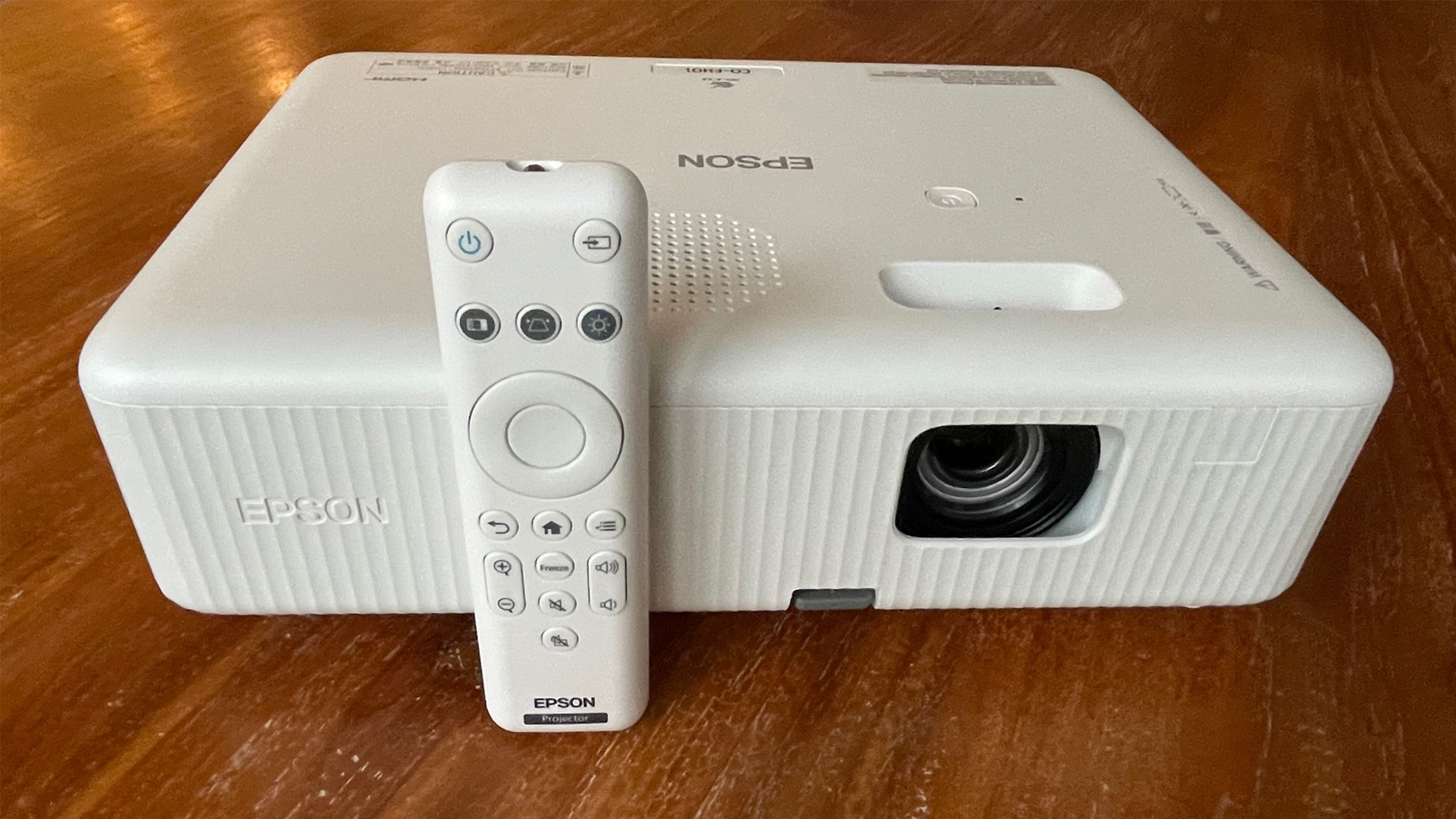
At just £499 (around $635 / AU$950), the Epson CO-FH01 is the cheapest projector we’ve tested for years. Even Samsung’s ultra-portable The Freestyle ‘lifestyle’ projector still costs a couple of hundred pounds more, despite multiple recent price cuts.
There are inevitably spec and potential performance compromises to swallow in return for the CO-FH01’s price, as we noted in our introduction. On the other hand, though, to the right sort of buyer, being able to get a projector capable of doing both home and office duties for under £500 these days might well look like a great deal rather than a sign of performance compromise.
At the time of writing, while the CO-FH01 is available in Europe and some Asian territories, it doesn’t appear to be available in the US or Australia.
Design
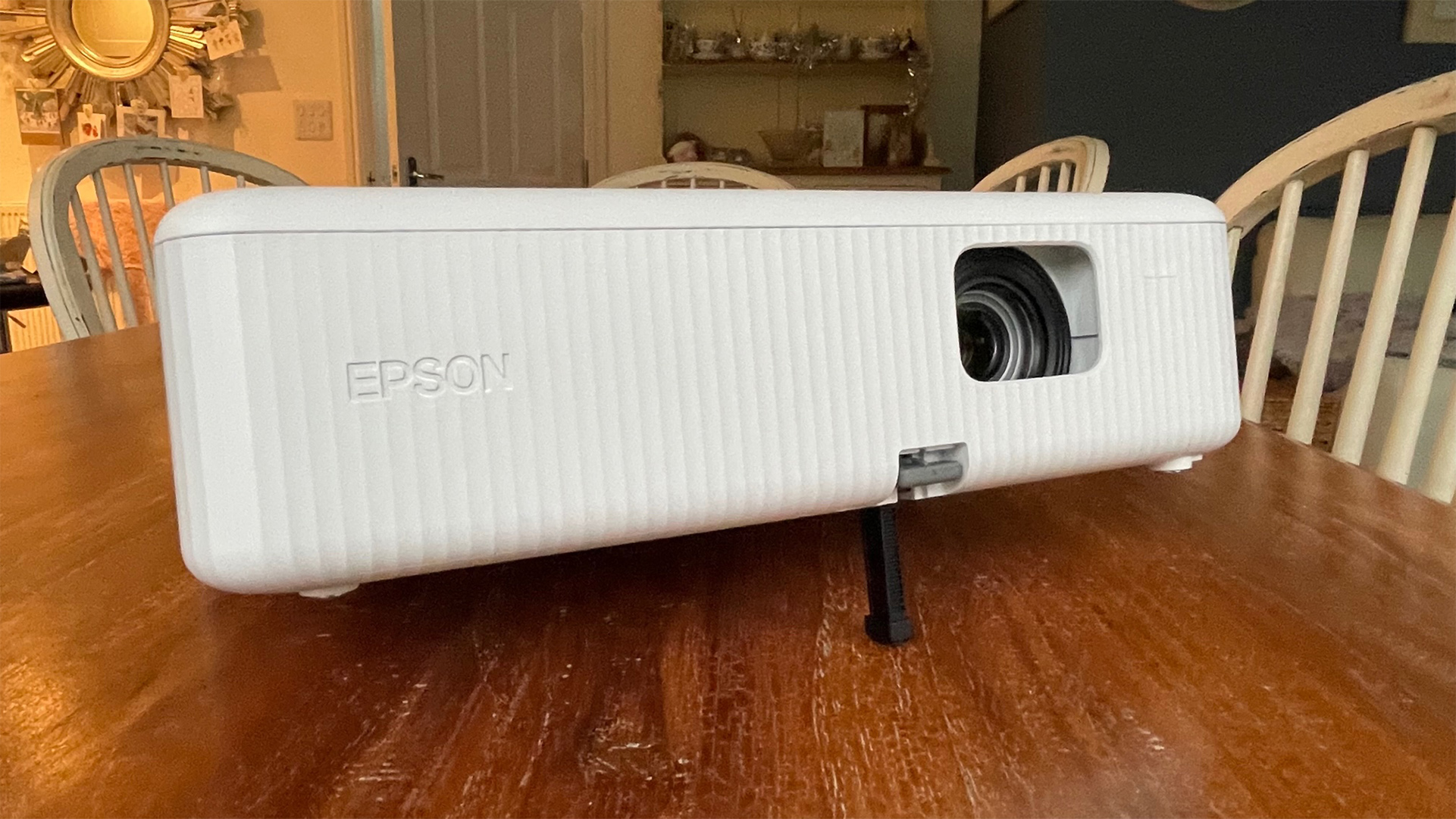
The CO-FH01 is cuter than it arguably needed to be given its focus on value and utility. It’s dressed on all sides in a crisp matte white finish, features an appealing corrugated effect around its front and side edges, softens its impact on your room by rounding off all its corners, and tucks its lens attractively – and safely – back within a window stylishly cut into the right side of the projector’s front.
The latest hi-fi, home cinema and tech news, reviews, buying advice and deals, direct to your inbox.
While it’s not small enough to class as ultra-portable, meanwhile, the CO-FH01 is smaller than the vast majority of projectors we see, and could easily fit into a briefcase or laptop bag. Or it will take up relatively little space in a cupboard in your home or office when it’s not needed.
A small round grille on the top edge provides egress for the sound from a built-in speaker, and next to this is a rotating focus ring.
The CO-FH01’s cute white form is joined by a similarly cute white remote control that’s comfortable to hold and sports an unusually ergonomic button layout. The only pity is that it’s not backlit – but then as we’ll see, this projector is probably not often going to find itself running in a really dark environment.
Features
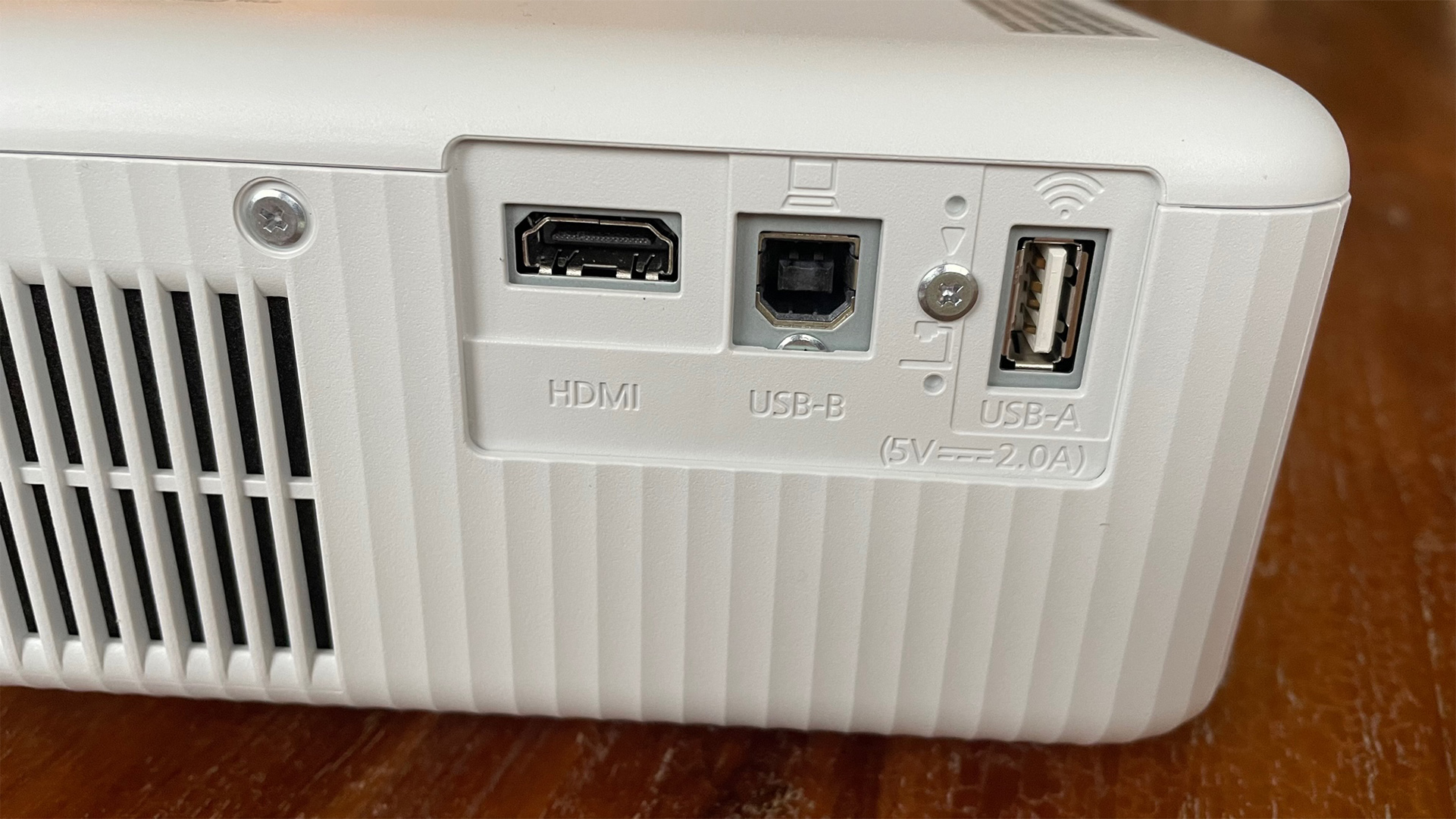
The three most important features of the CO-FH01 are ones we’ve already covered: its cheap price, its highly portable design, and the fact that Epson is targeting it at both office and home use.
Delving behind these headlines uncovers a long-throw LCD optical system illuminated by a regular lamp rather than laser lighting system. It sports a Full HD native resolution and doesn’t carry any e-shift technology that might have allowed it to deliver some sort of 4K experience.
It’s also a standard dynamic range-only projector – even though its eye-catching claimed maximum brightness of 3000 lumens may actually have helped it be more at home with HDR sources than many HDR-capable rivals.
That 3000 lumens actually looks potentially OTT for an SDR projector – until you realise that its ‘mixed use’ focus means it will likely often be used in rooms with quite a bit of ambient light to compete with.

Projector type lamp LCD
Processing N/A
Screen size 26-391-inches
Native resolution Full HD
Input lag with 60Hz in fast response mode 49.9ms
Dimensions (hwd) 21 x 30 x 8.7cm
Weight 2.4kg
As you’d hope of a projector with such a potentially varied work ‘beat’, it’s very easy to set up. A simple drop-down leg at the front and two screw-down legs at the back help you get images in the right place on your screen or wall, and a digital keystone adjustment is available to help you get the image’s sides straight. The focus ring works smoothly and offers very fine levels of adjustment.
It’s a pity from an image quality perspective that there’s no optical vertical or horizontal shifting with the CO-FH01, and that only a digital zoom is available rather than an optical one; after all, any kind of digital manipulation will cause the picture to lose its potential pixel-for-pixel purity with full HD sources. Ease and flexibility of set-up arguably trump the finer aspects of image quality with a projector such as the CO-FH01, though, and digital adjustments are cheaper for Epson to implement than optical ones, of course.
The CO-FH01’s ease of use and value proposition are increased, too, by Epson’s claims that its lamp should be able to deliver up to 12,000 hours of life before it needs to be replaced. This is only possible if you run the projector in its Eco mode (which drops brightness to around 2000 lumens), but it’s still a pretty remarkable claimed lifespan for a projector lamp.
The CO-FH01 doesn’t ship with any built-in smart features as standard – which is actually probably a good thing given what a mess integrated projector smart systems tend to be (with some honourable exceptions). You can, of course, add an external streaming stick or box if you want the CO-FH01 to support streamed content, but if you’re going to do that you need to know that the projector only carries a single HDMI port. So you won’t be able to keep your smart device permanently connected if you want to add another HDMI source such as a games console or Blu-ray player.
The only other connections besides the single HDMI are two USB 2.0 ports, and one of those is for service use only. This reminds us again that the CO-FH01 is designed as a ‘plug and play’, use-anywhere and only-when-needed projector, rather than something designed for permanent installation.
While a projector like the CO-FH01 clearly has potential as a cheap and convenient way of enjoying big-screen gaming, its HDMI port doesn’t support 120Hz so you’re restricted to 1080p/60Hz feeds, with no HDR. There’s also no dedicated Game picture mode, and no way we could find of getting the time the CO-FH01 takes to render its images below a slightly high (for competitive gaming, anyway) figure of 49.9ms.
Two final CO-FH01 features worth noting are a massive claimed maximum image size of 391 inches (though the picture will inevitably lose much of its brightness and impact when pushed so far), and the built-in 5W mono audio system revealed by the little perforated circle on the projector’s top edge.
Picture
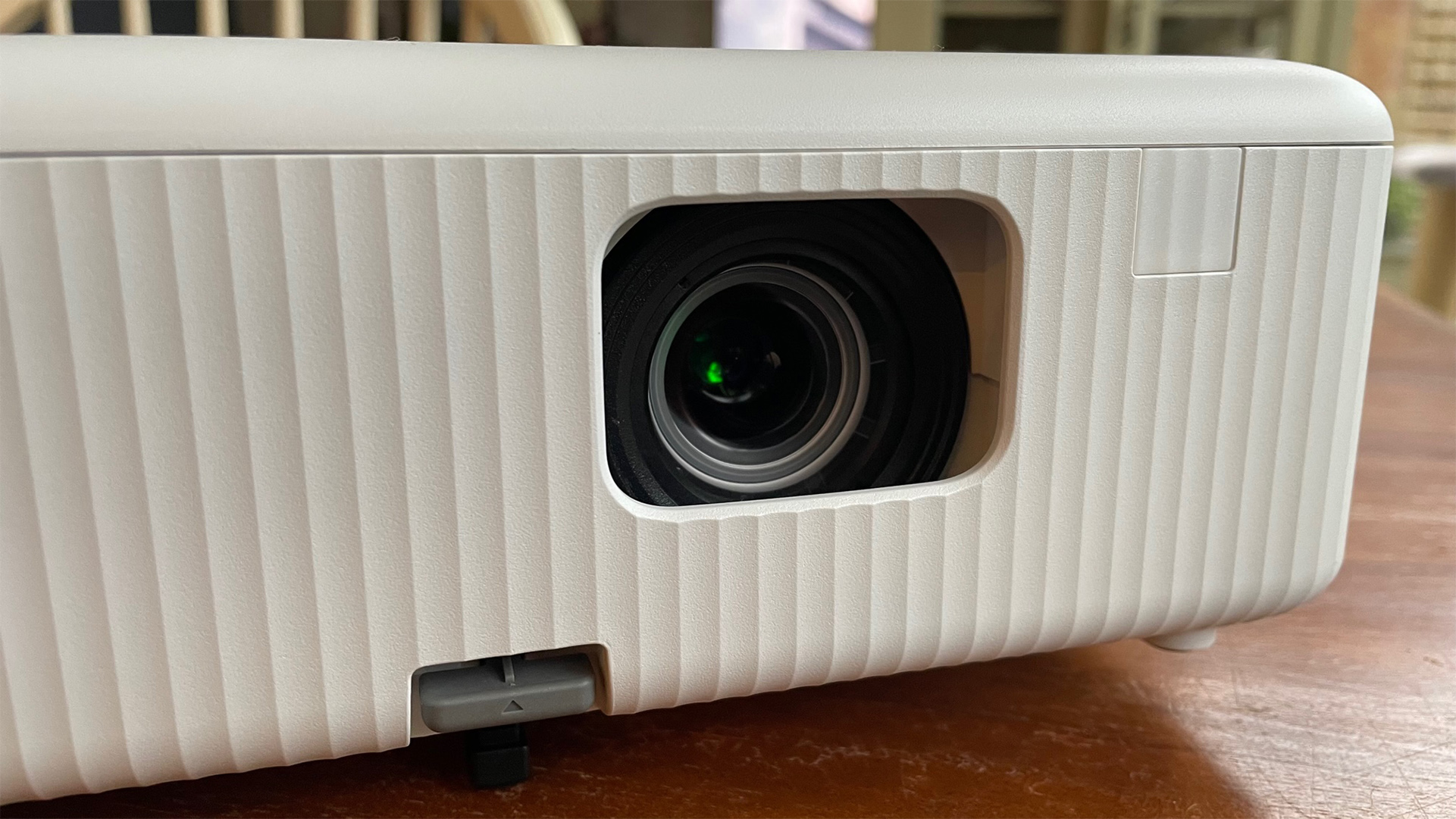
The CO-FH01 performs more or less as we’d have expected given its specifications and target audience – with all the pros and cons that entails.
The biggest pro by far is how bright its pictures look. The way bright content blazes off a screen in a dark room or punches through even quite extreme amounts of ambient light – including the sort of stark overhead lighting you get in conference rooms – really is something to behold. Especially for such an affordable projector. Even the 3000 lumens peak brightness claim ends up feeling conservative – perhaps because, unlike single-chip DLP projectors, the light output of LCD projectors remains as high for colours as it does for pure whites.
Since it’s an LCD projector, the CO-FH01 also manages to deliver its brightness without any of the fleeting colour striping ‘rainbow effect’ you get to some extent with so many DLP-based projectors.
There’s a good sense of sharpness to go with the intense brightness too, which enhances the raw intensity of the viewing experience. The sharpness holds up quite well with motion even with 24p movie sources too, despite the projector not having any motion processing on board. Judder is a touch stronger than we’d ideally like, perhaps emphasised by the image’s brightness, but it’s seldom severe enough to become a serious distraction.
The CO-FH01’s brightness and sharpness make it a reasonably attractive gaming display for most of the time, too – provided, that is, you’re not playing a game that’s based heavily on reaction times given the relatively high latency measurement.
While the CO-FH01’s picture strengths serve it well with office presentations and, more importantly for our readers, showing relatively bright video content such as a live sporting event, they also throw up significant issues if you fancy trying the projector with a more ‘serious’ home cinema experience.
Playing a film through the CO-FH01 in a dark room quickly reveals a really quite poor black level performance. Anything even remotely dark appears with an impossible-to-ignore grey wash over it that leaves the image looking flat and short of contrast. It also tends to pollute dark colours so that they’re left feeling muted and faded. Suddenly the brightness feels like it’s polluting the image rather than helping it maintain punch as it does in a bright room setting.
This is especially true when running the CO-FH01 in its High lamp mode. Switching this down to Low, though, as you should for dark room viewing, doesn’t make nearly enough of a difference to black levels or colour purity to make the CO-FH01 an enjoyable dark room watch. So while its brightness and crispness in conjunction with a nicely thought-out suite of picture presets mean it can adapt well enough to office and bright living room settings, its adaptability doesn’t extend to making it a compelling, convincing movie night option.
Dark room viewing uncovers another issue with the CO-FH01 that wasn’t so apparent when watching it in ambient light: colour inconsistency across the screen. So while some areas of dark scenes look slightly blue, others take on a variable reddish tinge.
The greyness overlying the image that’s hidden by ambient light but exposed in the dark also, finally, sees boldly coloured content feeling a bit washed out.
Our overall experience with the CO-FH01 both explains why Epson went so big on brightness despite it only being an SDR projector (to punch through ambient light for relatively casual office and daytime home use) and confirms why the home cinema lover in us was right to feel concerned about what so much brightness with SDR content might do to contrast and black levels.
Sound
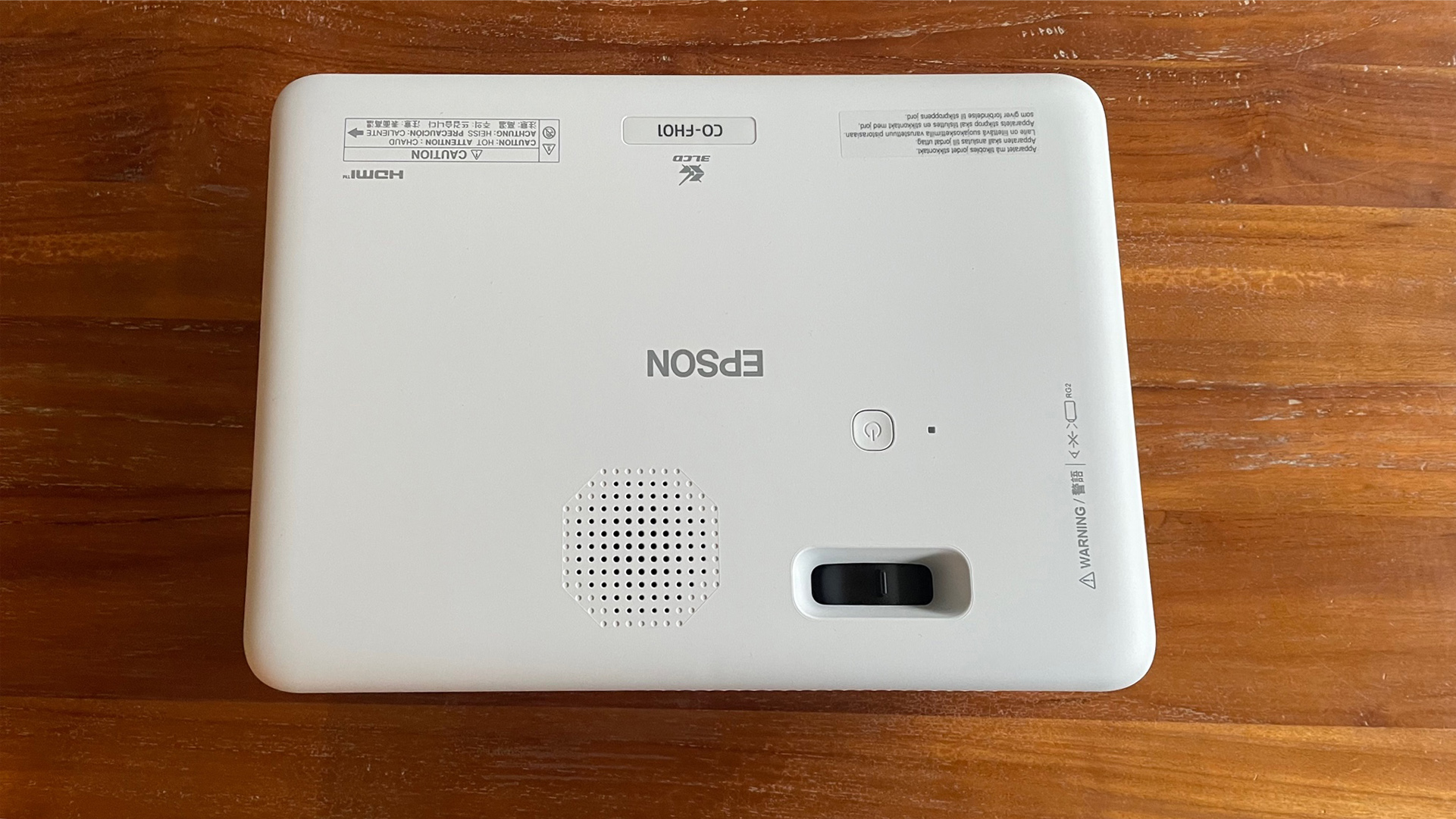
Neither the size of the CO-FH01’s speaker port nor its mono 5W configuration had us feeling particularly hopeful about the quality of its sound. And, unfortunately, it lives down to those humble expectations.
For starters, it manages to sound like it’s being propelled by even less than 5W of power in terms of both the scale and projection of its soundstage. It can’t get very loud at all – so much so that unless you’re sat close to it you can really struggle to hear any of the more subtle effects in a typical movie mix. Also, because its sound constantly struggles to escape the confines of the projector’s small bodywork, it never feels connected to the images the projector is throwing onto a distant wall or screen.
An almost total lack of bass can leave shrill audio effects sounding tinny, too, and pretty much inevitably in these circumstances, there’s really no sense of an action scene mix expanding towards a crescendo. Everything happens on the same, flat level.
The only thing that saves the CO-FH01 from scoring a solitary one score for its sound is the fact that dialogue sounds clear and legible at almost all times.
Verdict
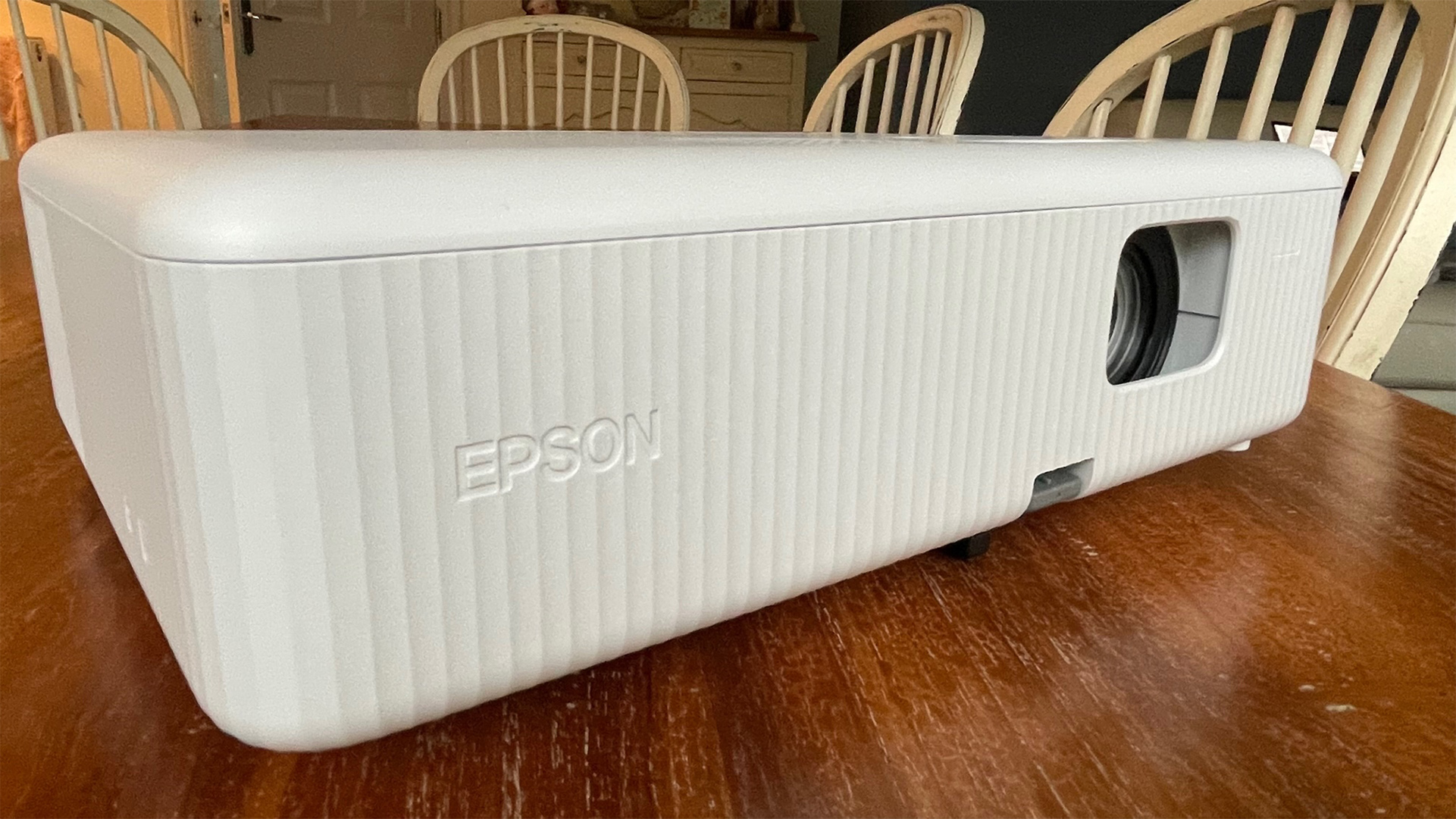
So long as you know exactly what you’re getting and you fit into the pretty precise demographic it suits, the CO-FH01 could be interesting to you. So, you need to accept that it’s only really satisfying when used in fairly bright environments and that you should therefore only consider it if you’re looking for a projector that can double up as an office or very casual (for big screen shared enjoyment of major sports or ‘reality TV’ events) home entertainment projector.
If you’re remotely interested in enjoying proper lights-down family movie nights, the CO-FH01 is definitely not for you.
SCORES
- Picture 3
- Sound 2
- Features 3
MORE:
Read our review of the Epson EH-TW6250
Also consider Samsung The Freestyle
Read our Xgimi Halo review
Best projectors: Full HD, 4K, and short-throw
What Hi-Fi?, founded in 1976, is the world's leading independent guide to buying and owning hi-fi and home entertainment products. Our comprehensive tests help you buy the very best for your money, with our advice sections giving you step-by-step information on how to get even more from your music and movies. Everything is tested by our dedicated team of in-house reviewers in our custom-built test rooms in London, Reading and Bath. Our coveted five-star rating and Awards are recognised all over the world as the ultimate seal of approval, so you can buy with absolute confidence.


